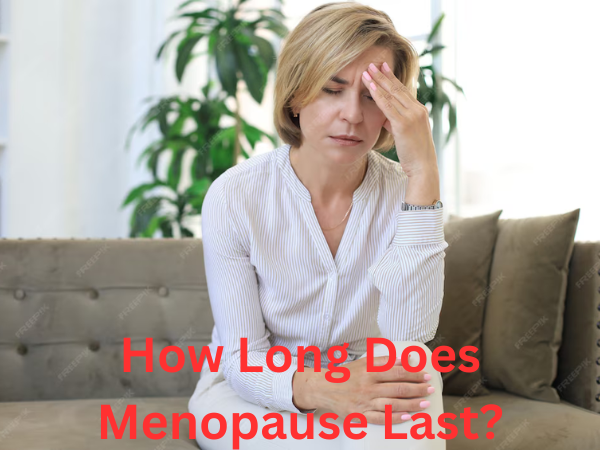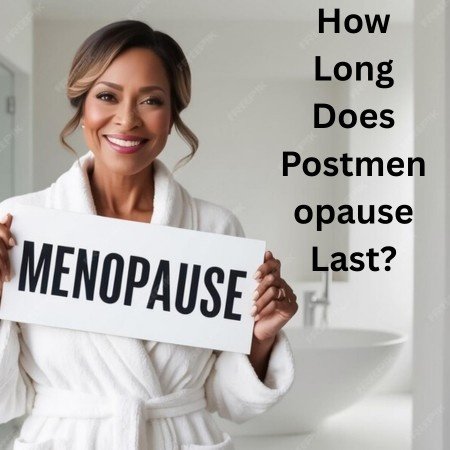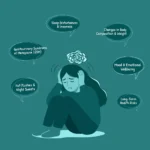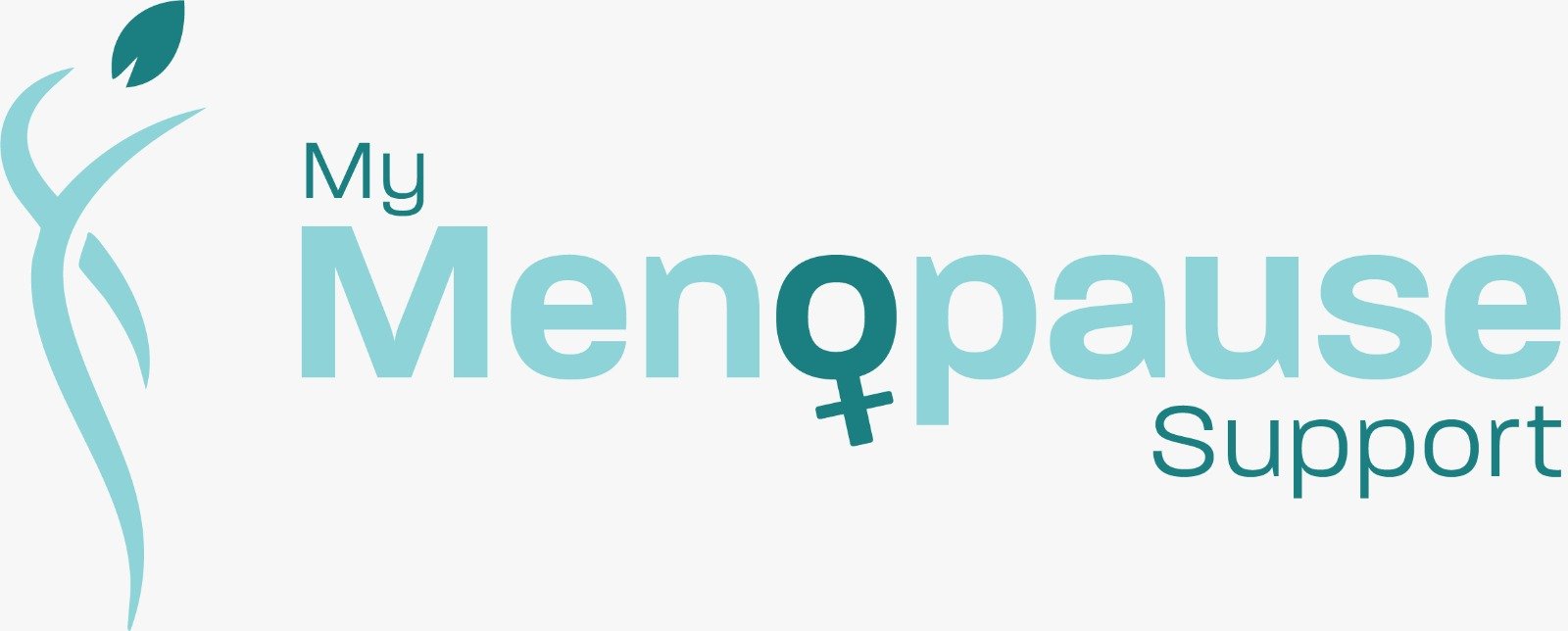If you are standing in the middle of the menopause transition, feeling buffeted by hormonal storms, there is one question that likely dominates your thoughts above all others: How long does menopause last?
It is the question we ask when we wake up, soaked in sweat, for the third time that night. It is the question we whisper when anxiety grips us before a simple meeting. And it is the question that often yields the most confusing answers from medical professionals.
If you look at a medical textbook, the answer is “one day.” If you ask a woman living through it, the answer might be “a decade.”
This detailed guide exists to bridge that gap. We will strip away the confusion and look at the real timeline of the menopause transition, what you can expect at each stage, and the signs that tell you when you are finally reaching the other side.
What Does “How Long Does Menopause Last?” Actually Mean?
To understand the timeline, we first have to untangle the terminology. The word “menopause” is often used as a catch-all term for the entire midlife hormonal shift, but medically, it refers to something particular.
What Is the Difference Between the Event and the Transition?
Technically, menopause is not a period; it is a retrospective milestone. You reach menopause on the exact day that marks 12 consecutive months since your last menstrual period. On that specific day, you are “in menopause.” The day after, and for the rest of your life, you are postmenopausal.
However, when you search for How Long Does Menopause Last?, you likely aren’t asking about that single day. You are asking about the symptoms—the hot flushes, the brain fog, and the emotional volatility. This symptomatic period is the “perimenopause” (the time leading up to the final period) and the early “postmenopause” (the recovery phase).
According to the Study of Women’s Health Across the Nation (SWAN), which tracked thousands of women over decades, the average duration of this symptomatic transition is roughly seven years. However, averages can be misleading. For some lucky women, it is a brief two-year blip. For others, particularly depending on ethnicity and lifestyle factors, symptoms can persist for up to 14 years.
What Are the Three Stages of the Timeline?
The journey is rarely a straight line, but it does follow a map. Understanding which territory you are currently in can help you gauge how much further you have to travel.
How Long Does Perimenopause Last?
Perimenopause is the “rocky road” leading up to the destination. It typically begins in a woman’s mid-40s, though it can start earlier.
During this phase, your ovaries don’t just switch off; they sputter. Hormone levels fluctuate wildly, leading to the “rollercoaster” effect many women describe. You might feel absolutely fine one month, only to be hit by a wave of anxiety and heavy bleeding the next.
Average Duration: 4 years.
What to Expect: This is often the most symptomatic phase. Cycles become irregular—shorter, longer, heavier, or lighter. This is when hot flushes and night sweats usually begin, alongside mood swings and sleep disturbance.
When Does Menopause Occur?
The average age of menopause in the UK is 51. However, anywhere between 45 and 55 is considered normal. If it happens before 45, it is classed as “early menopause,” and before 40 is “Premature Ovarian Insufficiency” (POI).
How Long Does Postmenopause Last?
Postmenopause lasts for the remainder of your life. It is the “new normal.”
Many women fear that postmenopause means living with symptoms forever. This is rarely the case. For most, the “storm” of perimenopause settles into a calmer state. While your hormone levels remain low, your brain eventually adapts to this new environment. However, this is also the phase where long-term health strategies become critical to protect your bones and heart.
How Long Do Specific Symptoms Persist?
Not all symptoms follow the same timeline. Some are transient (temporary), while others are progressive (chronic). Knowing the difference is vital for managing your expectations and your treatment.
When Do Hot Flushes and Night Sweats Stop?
Vasomotor symptoms, commonly known as hot flushes and night sweats, are the hallmark of the transition. They occur because the drop in oestrogen narrows the “thermo-neutral zone” in your brain’s hypothalamus. Essentially, your internal thermostat becomes incredibly sensitive.
The Timeline: For most women, these peak during late perimenopause and the first two years of postmenopause. The average duration is around 7.4 years.
The Exception: Roughly 10-15% of women are “super-flushers” who may continue to experience mild flushes into their 60s or 70s. However, the intensity usually diminishes significantly over time.
Will the Brain Fog Ever Lift?
Cognitive symptoms can be the most frightening part of the process. Forgetting names, losing your train of thought, or feeling like your head is full of cotton wool can make many women fear early dementia.
The good news is that menopause-related cognitive decline is usually temporary. Oestrogen helps regulate glucose metabolism in the brain. When levels fluctuate wildly during perimenopause, the brain struggles to fuel itself efficiently. Once hormones stabilise in postmenopause, the brain compensates, and the fog typically clears.
Why Is Joint Pain Still an Issue?
Joint pain is the silent symptom of menopause that catches many women off guard. Oestrogen acts as a natural anti-inflammatory and joint lubricant. When levels drop, inflammation can rise, leading to “menopause arthritis” or general stiffness.
Unlike hot flushes, which the brain adapts to, joint health relies on physical maintenance. This symptom can persist into postmenopause if not managed with diet, exercise, and potentially Hormone Replacement Therapy (HRT).
What About Vaginal Dryness?
This is the most crucial distinction to make: while flushes tend to go away, vaginal and bladder symptoms (Genitourinary Syndrome of Menopause) do not. They are progressive. Without oestrogen, the tissues of the vulva and vagina become thinner and less elastic. This doesn’t resolve on its own and usually requires local oestrogen treatment to prevent long-term discomfort and urinary tract infections.
What Factors Influence How Long It Lasts?
Why does your friend sail through in two years while you are struggling for ten? Several variables influence the duration of your transition.
Does Ethnicity Play a Role?
Research from the SWAN study highlighted significant disparities based on ethnicity. African American women, for instance, were found to experience hot flushes for significantly longer—a median of over 10 years—compared to White or Asian women. This suggests that genetic factors, as well as the cumulative effects of stress and environmental factors, play a significant role in shaping the timeline.
Can Lifestyle Affect the Duration?
Smoking: Smokers typically reach menopause up to two years earlier than non-smokers and often experience more severe flushes due to the impact of toxins on ovarian function.
Stress: Chronic stress can exacerbate hormonal imbalance. The body uses the same raw materials to make cortisol (stress hormone) as it does to make sex hormones. High stress “steals” these resources, potentially prolonging the symptomatic instability of perimenopause.
How Can You Manage the Transition?
You cannot change your genetics, but you can change how you experience the timeline.
Does HRT Delay the End of Menopause?
A common myth is that taking HRT “delays” menopause. Women worry that if they take HRT for five years and then stop, they will have to go through the hot flushes then.
This is generally false. Your ovaries will continue their natural process of retirement in the background, whether you take HRT or not. HRT acts as a bridge. It keeps your hormone levels topped up while your body adjusts. If you wean off HRT a few years into postmenopause, you may find that you have effectively “skipped” the worst years of the transition.
What Is Cognitive Behavioural Therapy (CBT) for Menopause?
For those who cannot or choose not to take hormones, Cognitive Behavioural Therapy (CBT) has emerged as a gold-standard non-hormonal treatment. The British Menopause Society and NICE guidelines both recommend it.
CBT doesn’t just “help you cope”; it actually changes how the brain perceives temperature changes and stress. Studies show it can significantly reduce the bother of hot flushes and improve sleep, effectively making the transition feel more manageable.
How Should I Eat During This Time?
The NHS Eatwell Guide suggests shifts that are particularly crucial now:
Calcium: With bone density dropping, you need 2-3 portions of calcium-rich food daily.
Protein: To combat muscle loss (sarcopenia), prioritise protein at every meal.
Phytoestrogens: Foods like soy and linseeds can offer a mild oestrogenic effect, which may help smooth out the hormonal dips.
What Are the Signs That Menopause Is Ending?
How do you know when you are nearing the finish line? While there are no flashing lights, there are subtle physiological clues.
1. The Bleeding Stops Completely
The most obvious sign is the cessation of periods. In late perimenopause, you might skip periods for months at a time (e.g., missing three months, having one, missing four). When you finally reach 12 full months without a bleed, you have crossed the threshold.
2. The Emotional Rollercoaster Flattens
You may notice that the sharp, jagged mood swings of perimenopause begin to smooth out. You might still feel low or tired, but the unpredictable rage or tearfulness often subsides as oestrogen levels stop fluctuating and stay consistently low.
3. Hot Flushes Become Less Intense
Instead of intense, drenching sweats every hour, they might become milder “warm spells” or occur only when triggered by alcohol or stress. This indicates your hypothalamus is beginning to recalibrate.
4. Sleep Improves
As night sweats diminish, many women report a gradual return to better sleep quality, which in turn lifts the brain fog and fatigue.
Conclusion: Reclaiming Your Journey
So, How Long Does Menopause Last? The biological event is a single day. The symptomatic transition is a journey of roughly seven years. But the post-menopausal phase is the rest of your life.
While the numbers can seem daunting, reframing the timeline helps. This is not just a period of loss; it is a period of recalibration. By understanding the stages—from perimenopause to postmenopause—and utilising tools like HRT, lifestyle changes, and Cognitive Behavioural Therapy (CBT), you can navigate this transition with agency.
The duration of the transition is inevitable, but the duration of the suffering is optional. If you are struggling with joint pain, hot flushes and night sweats, or anxiety, do not wait for the clock to run out. Seek support, explore your options, and remember that this transition does eventually end, often leading to a calmer, more stable chapter of life.
FREQUENTLY ASKED QUESTIONS
When is a woman considered to have reached menopause?
A woman is said to have reached menopause when she has gone 12 consecutive months without having a menstrual period, and there is no other medical reason causing the bleeding to stop.
How long does the menopausal transition (perimenopause) usually last?
The transitional period — called perimenopause — often lasts around four years, but it can vary widely. Some women experience perimenopause for just a few months, while for others it may last up to 8–10 years before menopause begins.
Once periods stop, how long do menopause-related symptoms typically continue?
While the official “stop” to menstruation marks menopause, many symptoms — like hot flashes, night sweats, mood changes, sleep disturbances — can continue for several years. On average, some women experience such symptoms for about 7 years after their last period. For others, they may persist longer.
Does menopause ever truly “end,” or is it a permanent stage?
Menopause itself (the point when periods permanently stop) is a one-time milestone. The phase that follows, called post‑menopause, lasts for the rest of a woman’s life. While many symptoms ease during post‑menopause, some women may continue to experience mild symptoms over several years.
What factors influence how long menopause (or its symptoms) will last for an individual?
Several factors can affect the duration and intensity of menopausal transition and symptoms, including age at onset, genetics, overall health, lifestyle habits, and stress levels. Because of this variability, menopause experiences differ widely from one woman to another.









